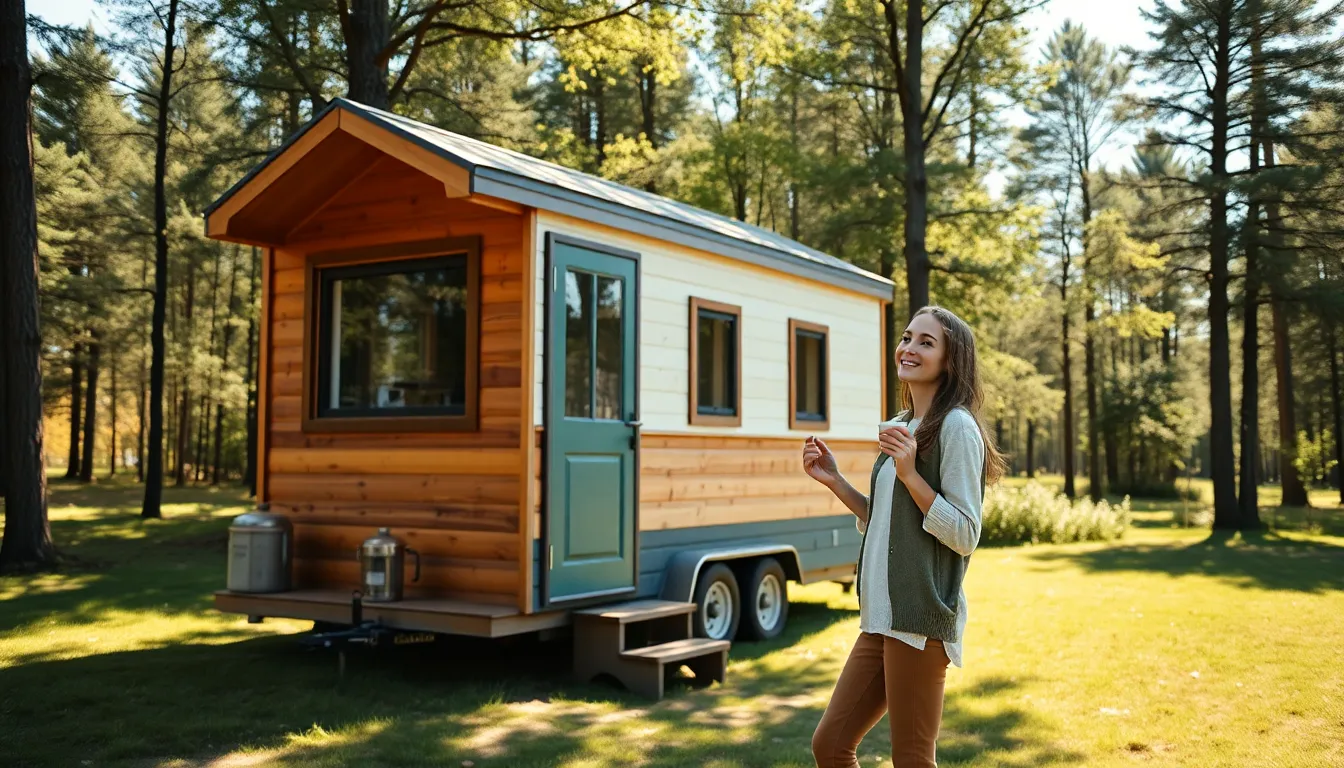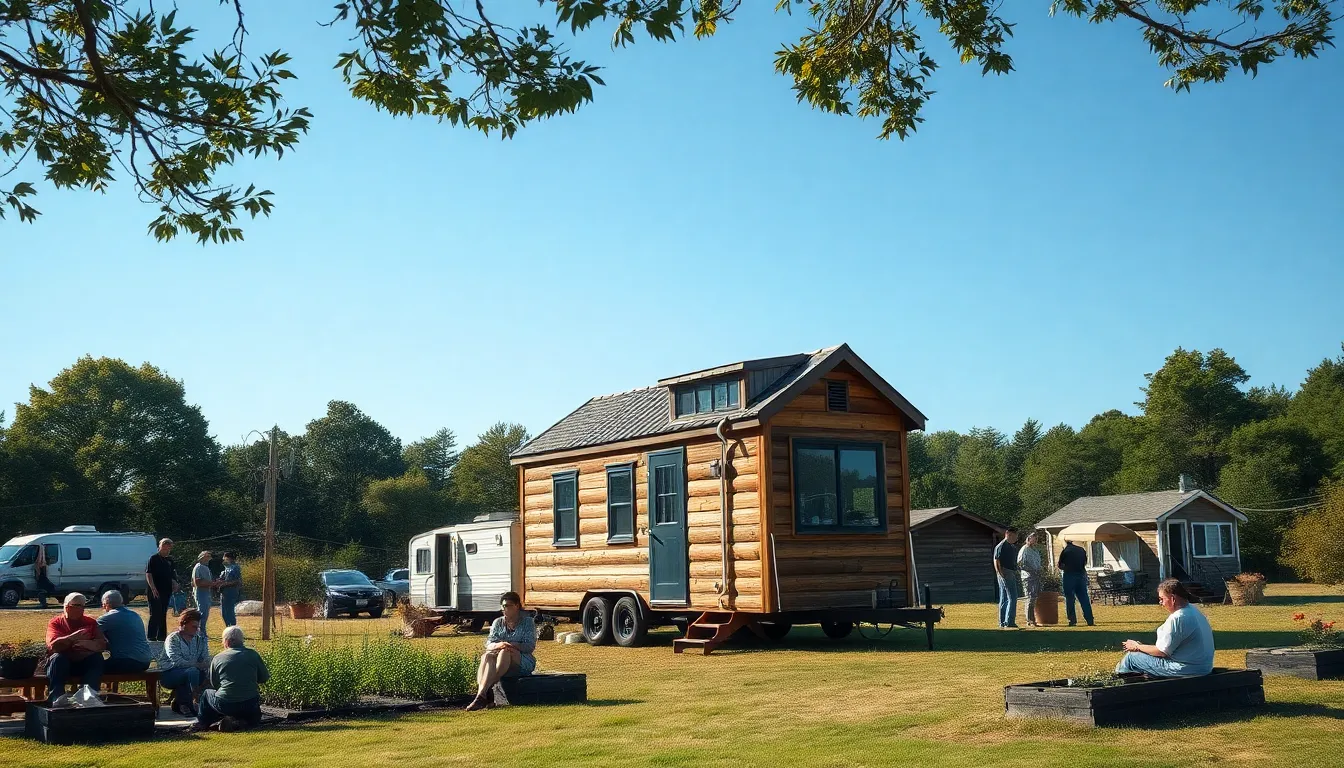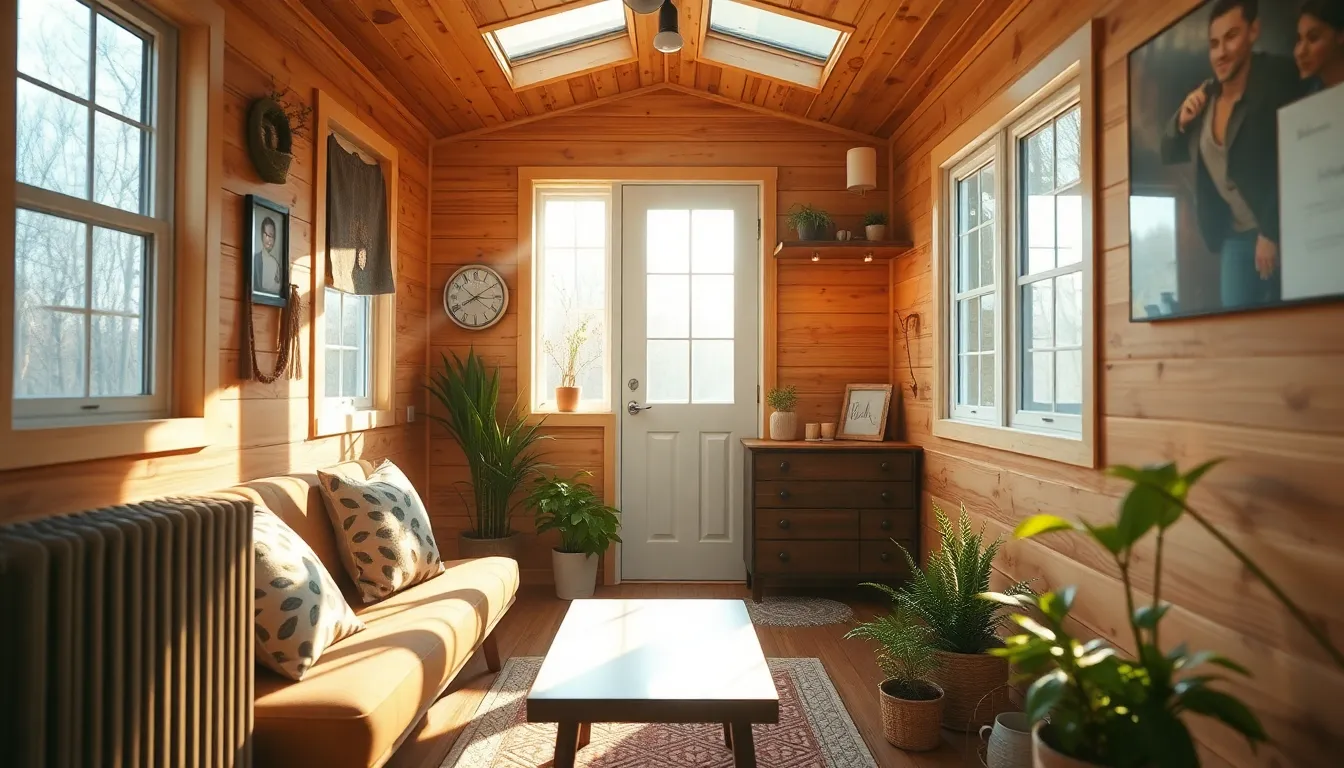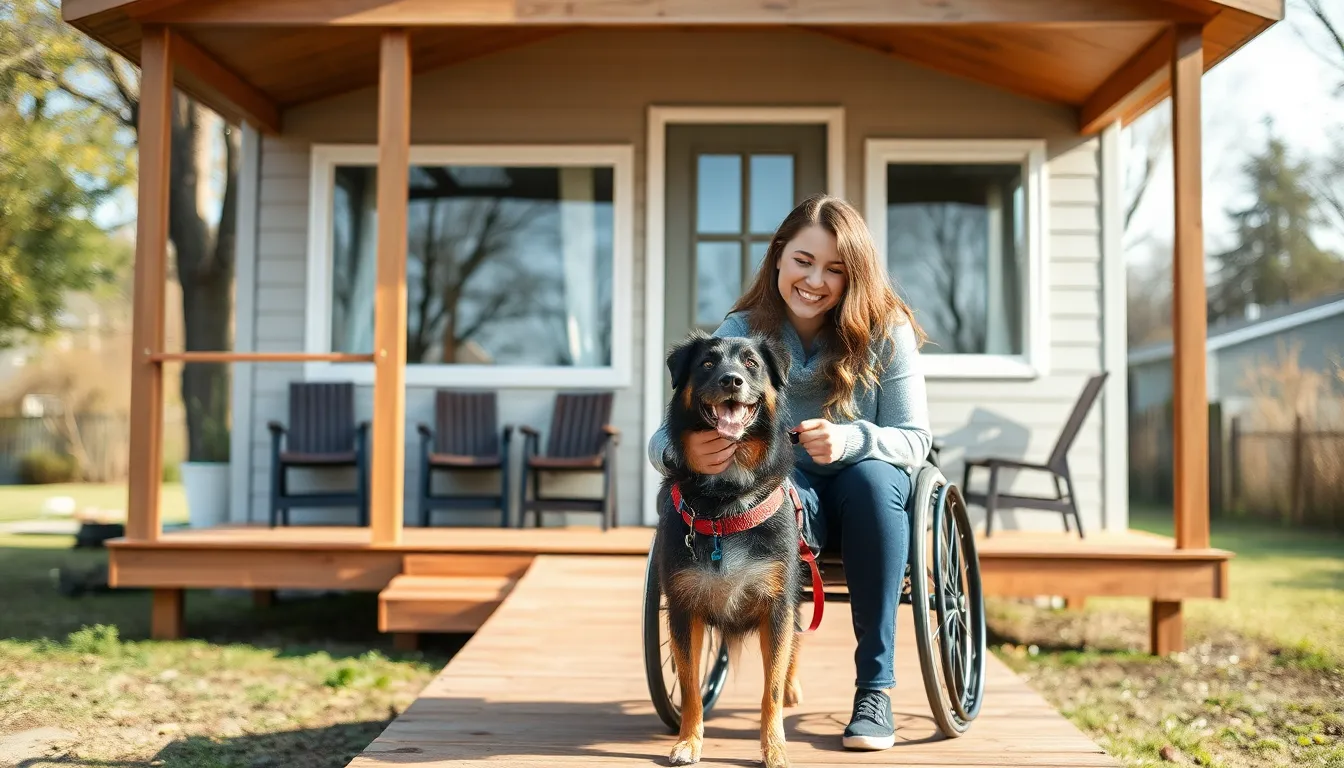Imagine living in a cozy tiny house, sipping coffee on your porch while the world rushes by. Sounds dreamy, right? But wait! Where do you park this miniature marvel? Tiny house parking might just be the unsung hero of the tiny living movement, and it’s time to shine a spotlight on it.
Table of Contents
ToggleUnderstanding Tiny House Parking
Parking a tiny house involves finding appropriate locations to rest these unique living spaces. Understanding options and regulations becomes essential for successful tiny house living.
What Is Tiny House Parking?
Tiny house parking refers to designated areas where tiny homes can be legally stationed. Such spaces can include private land, RV parks, and specially zoned communities. Legal requirements vary widely, making knowledge of local laws vital. Some tiny homes may require permits or adherence to specific zoning regulations. Each environment presents distinct advantages, like increased privacy or community amenities.
Importance of Proper Parking
Proper parking for tiny houses ensures safety and compliance with local regulations. It prevents potential fines and legal issues. Non-compliance can lead to eviction or mandatory relocation. Moreover, appropriate parking locations may offer essential utilities, including water, electricity, and sewage disposal. A secure site enhances the overall tiny living experience. Researching available options allows residents to optimize their tiny house lifestyle.
Types of Tiny House Parking
Tiny house residents can choose from various parking options based on their lifestyle needs and preferences. Understanding these options ensures a suitable home base for tiny living.
Permanent Parking Options
Permanent parking sites typically include small home communities, private land plots, and designated RV parks. These locations often feature necessary hookups for utilities such as water and electricity, ensuring comfort and convenience. Zoning regulations usually govern these areas, requiring tiny house residents to obtain permits. Properties may also offer amenities like laundry facilities, communal spaces, and planned social activities, contributing to a sense of community. Long-term leases or ownership may provide stability, making these options attractive for those seeking a more established living situation.
Temporary Parking Solutions
Temporary parking solutions include campgrounds, short-term rental properties, and friends’ or family members’ land. These sites allow for greater flexibility, accommodating travelers or individuals in transition. Campgrounds often provide essential services such as restrooms, showers, and sometimes Wi-Fi access. Renting a spot for a few days or weeks can offer unique locations for exploration while minimizing the commitment. Tiny house owners can utilize these options for vacations, festivals, or events, presenting an opportunity to experience different environments without a long-term commitment.
Legal Considerations for Tiny House Parking
Tiny house parking involves navigating various legal frameworks. Residents must understand the specific laws governing their chosen parking locations.
Zoning Regulations
Zoning regulations dictate where tiny houses can legally reside. Many municipalities designate certain zones for residential use, which impacts tiny home placement. These regulations may classify tiny houses as accessory dwelling units or classify them under RV laws. Compliance with local zoning ordinances prevents legal issues. Seeking local government resources helps clarify allowable locations.
Permitting Requirements
Permitting requirements are crucial for tiny house parking. Many regions require permits before placing a tiny house on a lot, whether it’s private property or a designated park. Specific permits may include building permits, occupancy permits, or land use permits. These permits ensure adherence to safety and zoning regulations. Consulting with local authorities streamlines the application process and aids in avoiding penalties.
Finding Tiny House Parking
Finding a suitable parking space for a tiny house involves exploring multiple resources. Various avenues offer valuable insights into the options available for parking these homes.
Online Resources and Communities
Numerous online platforms connect tiny house enthusiasts. Websites dedicated to tiny living often list parking opportunities across different regions. Social media groups allow individuals to share experiences and recommendations for parking locations. Forums and blogs provide firsthand accounts of where to park legally, ensuring safety and compliance. Using resources like Tiny House Listings, Tiny House Talk, and Facebook groups helps locate both temporary and permanent options that suit individual preferences.
Local Government Resources
Local government offices serve as excellent resources for tiny house parking information. Many municipalities offer zoning maps and regulations online, clarifying where these homes can be parked. Visiting the planning or zoning department can provide crucial information on permits and zoning laws. Engaging with local officials ensures awareness of community-specific regulations that affect tiny house living. Such interactions can reveal opportunities for finding legal parking spaces and avoiding potential fines or complications.
Conclusion
Finding the right parking for a tiny house is vital for a successful tiny living experience. With various options available including permanent sites and temporary spots, tiny house residents can choose what best fits their lifestyle. Understanding local regulations and obtaining necessary permits is crucial to avoid legal complications.
By exploring resources like online platforms and engaging with local authorities, individuals can uncover suitable parking opportunities. This proactive approach not only enhances the tiny living experience but also ensures compliance with local laws. Ultimately, a well-chosen parking space can provide the stability and community that tiny house residents seek.









